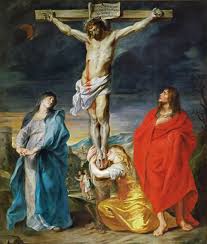The former Chief Exorcist of Rome, of pious memory, Fr. Gabriele Amorth is well known in Catholic circles for his books on the demonic. He is well known outside of Catholic circles for his repeated criticism of the Harry Potter series. Speaking mainly from the experience of casting out thousands of demons, he once said, “behind Harry Potter hides the signature of the king of the darkness, the devil.” This was met by mockery outside the Church and deaf ears within. Many Catholics, clergy included, see “nothing wrong with Harry Potter” and thus allow and encourage children to read the series, see the movies, visit amusement parks and play video games. Fr. Amorth is not the only exorcist who has warned against the series and even Pope Benedict cautioned against it during his time as Prefect of the Congregation of the Faith. Deaf ears can often lead to blind eyes and thus it is imperative that we have a coherent explanation and not merely scare tactics of why Harry Potter is dangerous.
To begin, we must concede that for a parent to offer an “it is harmless” defense of anything is not good parenting. Even if there is such thing as a “harmless” story (as opposed to helpful or harmful), it is questionable parenting to use that as a criteria for what you expose your children to. Junk food for the body might be permitted, junk food for the mind ought not to be. But in truth it is an attempt to feign neutrality when in fact there is really no such thing as a neutral story. Inundated by television and movies, which condition us to accept views of the world uncritically, we can easily forget how powerful a story is to convey a world view. We tend to equate entertainment and goodness.
Why Stories Matter
Stories are, to borrow a phrase from JRR Tolkien, a sub-creation. The author creates a world of his own imagining and then animates that world. But it is not a creation ex-nihilio, but a sub-creation. To be intelligible it must rest upon reality as it really is. A good story should also be entertaining, but to be good it must wrap a narrative around a particular aspect of reality so as to let the light of truth shine upon it. A bad story may also be entertaining, especially if we are uncritical of what we are reading or seeing. In fact, it often is in order to mask the ugliness of the story. Ultimately what makes it a bad story is that it distorts reality. It puts forth a false idea of truth and goodness, redefining them in subtle ways.

Stories have such a powerful effect on children because of their unbridled capacity for wonder. Wonder gives them a much more expansive view of reality which makes them particularly apt to see the message attached to the narrative. They don’t just read a book or watch a movie, they insert themselves into the world created by the author and move about. This is why a whole generation of now adults grew up playing Star Wars and why another generation is growing up playing Harry Potter. If you don’t want your children pretending to be magicians, using magic for good or ill, then you would not want them to read these books. Children will play in the stories they hear and read.
There is also a bit of a mixed message that is being sent. Magic, sorcery and divination are all presented as intrinsically evil by the Church (c.f. CCC 2117) but presented as something that can be used for good by the Harry Potter books. Since “intrinsically evil” implies one can never use it for good, this sends a rather mixed message. In short, on the one hand we have a story where the hero uses it and on the other we have stories in Scripture where it is strongly condemned regardless of how it is used. Deuteronomy 18:9-12 describes magic as an abomination before God and tells how a believer should respond in the face of it. One need not wonder what would happen if Harry met St. Paul given the latter’s interaction with the magician in Acts 13:6-12. The point though is that a child will not naturally allow a contradiction to exist and thus will reject one story and accept the other. One can hardly imagine that, without proper guidance and formation, the child will almost always choose the more entertaining story.
What is Magic, anyway?
A fuller understanding of magic itself will help us better grasp the inherent danger; a danger that is growing daily as our culture is re-paganized. There are about 20,000 books on Amazon that describe different Wiccan spells so we are talking about more than just mere sleight of hand or some fringe movement if we merely follow the market. Magic is not a sub-creation created in the mind of the author, but something that exists in the real world. Magic is about harnessing superhuman power and using it to overcome our natural limitations. So, when we speak about magic what we are really talking about is angelic power. Angels by their nature can act upon material creation simply by willing it. They can manipulate pre-existing matter in any matter that they wish. This is exactly what those schooled in magic and the occult are trying to do.
The problem is that evil angels, demons that is, are willing to share this power with human beings. Not in order to help them but to entrap them. They give them superhuman powers through spells and the like in exchange for control of them. By grasping at a power beyond them, they submit their own human strength to the demons. The demons are only too happy to comply because it makes them “like God” because it is a cheap imitation of God’s power of miracles. Ultimately it is an attack on God and the humans are simply pawns who end up bearing the brunt of it.
The Harry Potter books never say where the magic comes from, but it comes from the place that all magic comes from hell. It can seemingly be repurposed for good, or else it would lack appeal, but ultimately this good is a mere smokescreen for the evil that lurks behind its power. This repurposing of magic for the good is the theme behind another fantasy story, one that acts like the magic elephant in the room anytime Harry Potter is discussed–The Lord of the Rings.
Magic is a key element in the Lord of the Rings as well, and yet, most would say these would be categorized as good stories. To grasp how it is different from Harry Potter we must return to what was said earlier about the source of magic. If magic, at its core is angelic power, then there is nothing wrong with angels using it. It is their natural power. Those who naturally use magic in the story, namely the Elves and Gandalf, are not human. Gandalf is not a man but an angelic being called a Maiar who had taken human form. He and the Elves are, in Tolkien’s sub-creation, angels. It is natural for them to use “magic” and thus they are not seizing something that does not belong to them, but applying their given powers in pursuit of the good. The story makes clear that all those lesser creatures who ultimately try to harness that power, even if for good use, ultimately come to ruin. It is a story ultimately against magic and not for it. And in that way it is vastly different than Harry Potter which celebrates its use by men and women.

















